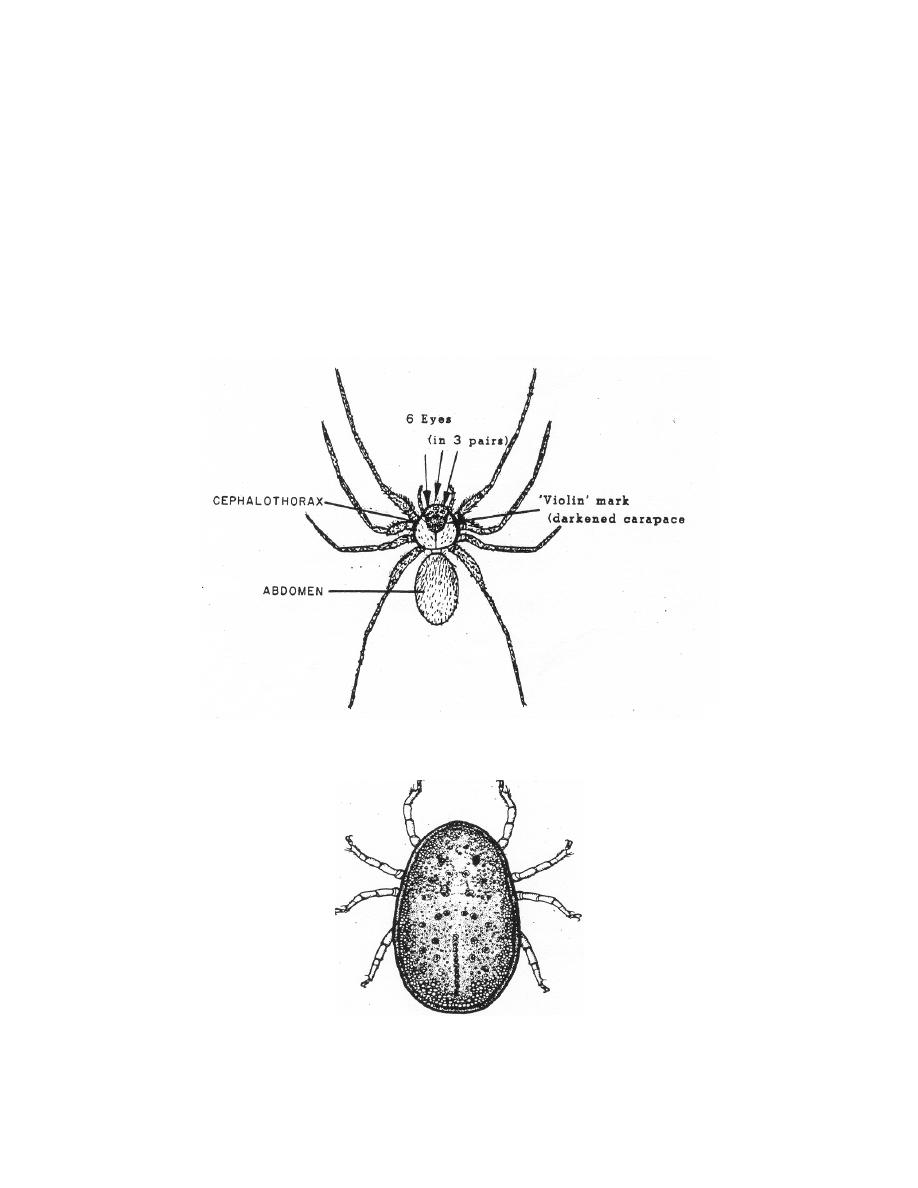
less worm-like larva (the young, feeding stages); an intermediate nonfeeding,
transformation stage called the pupa; and finally, an adult that generally differs markedly
from the larva in form as well as habits. Insect examples include butterflies, flies, and
beetles.
b. Class Arachnida. This includes among others, the ticks, mites, scorpions,
and spiders. The spiders and scorpions, have two distinct body regions: the
cephalothorax and the abdomen (see figure 1-2). The mites and ticks have only one
major body region (see figure 1-3). The adults have four pairs of legs, but no wings or
antennae. Ticks and mites are the most medically important members of this class
since some transmit many diseases.
Figure 1-2. Brown recluse spider, example of an arachnid with two body regions.
Figure 1-3. Soft tick, example of an arachnid with one body region.
MD0170
1-4


 Previous Page
Previous Page
